
Benefits of yoga for Diabetes Patients
High blood pressure, stress, and obesity are common factors in people with diabetes. In fact, 50 percent of people with diabetes have high blood pressure, which causes greater diabetes complications. It is important for people with diabetes to have a healthy lifestyle in order to keep their blood pressure down and their weight down, as well as try to reduce stress as much as possible. Exercise is the best way to do this, especially low-impact exercise like yoga. As a result, many doctors and diabetes centres are recommending yoga for diabetes.
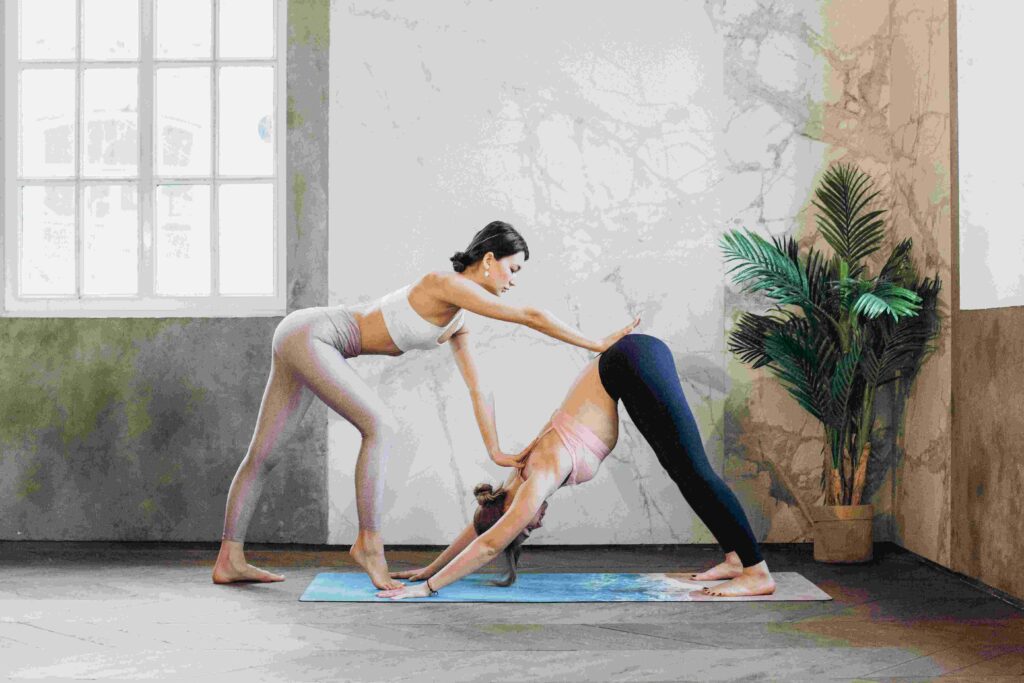
A regular yoga practice will not only help keep blood pressure down, but it will also improve glucose levels, increase insulin sensitivity and lower blood glucose. Furthermore, insulin can cause weight gain, which is a problem for people with diabetes (especially Type 2). Although this is a sign that the insulin is working and the diabetes is under control, it is also a problem, so keeping weight gain at bay is a must. Regular exercise and eating healthily are key ways to do this. Yoga helps with both of these things, as it promotes weight loss and mindful eating, so it makes sense that yoga is also great for diabetes.
What is Yoga?
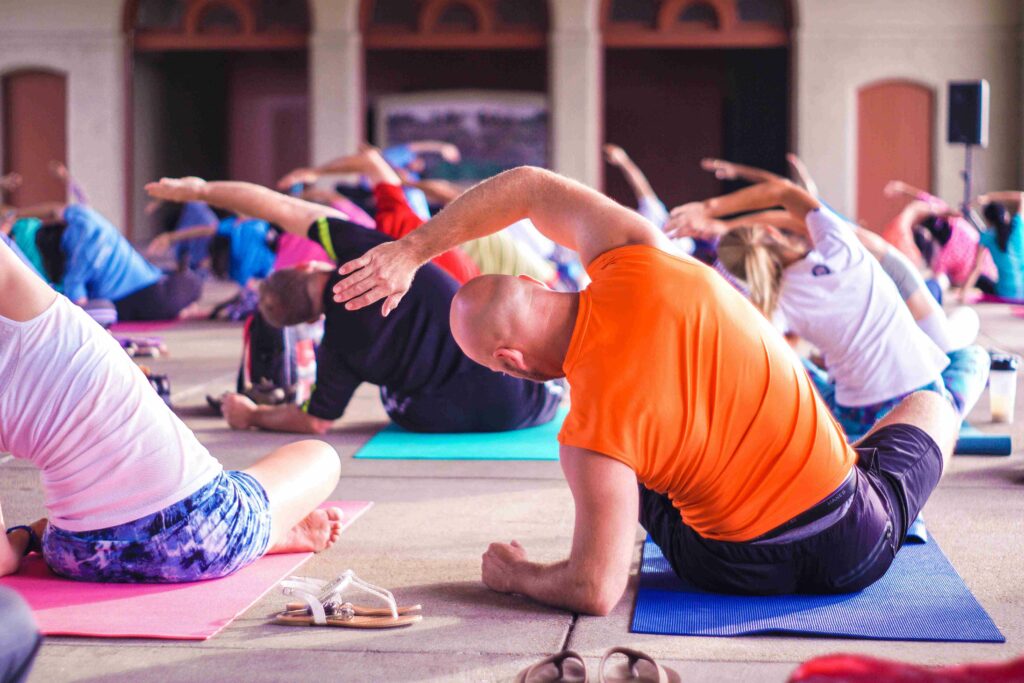
The Sanskrit translation of yoga means to unite, to join, or to attach. It can also mean contact, connection, method, and performance. According to 6th century ancient philosopher and Sanskrit translator Panini, yoga comes from one of two words; yujir yoga (to bind) or yuj samādhau (to concentrate). In the context of practicing yoga, many believe that the perspective of yuj samādhau is prevalent as opposed to asana (yoga poses); as concentration and mindfulness are its key elements. In fact, the ancient Yoga Sūtras of Patañjali (1.2) state that “Yoga is the suppression of the activities of the mind”. In short, there is no simple or definitive meaning of yoga, but being aware of yourself and your surroundings is a good place to start (i.e. mindfulness).
In the west, yoga is mostly used as a form of exercise, focusing on putting your body into several poses and combining the movement from one pose to another in conjunction with the breath. The intention is to increase strength, flexibility, and balance, as well as heighten one’s sense of wellbeing. It can also include meditation. Meditation is fantastic for diabetes, as it significantly reduces blood pressure and heart rate. In fact, research that was conducted at the Medical College of Georgia found that students who had taken part in a three month meditation course had significantly lower blood pressure rates than those that did not take part in the training. Another study that was completed at the Department of Internal Medicine at the University of Kentucky concluded that Mindfulness Meditation helps reduce stress and the risk of heart attacks, stroke, and hypertension. This, in turn, decreases blood pressure.
Diabetes and Mindfulness
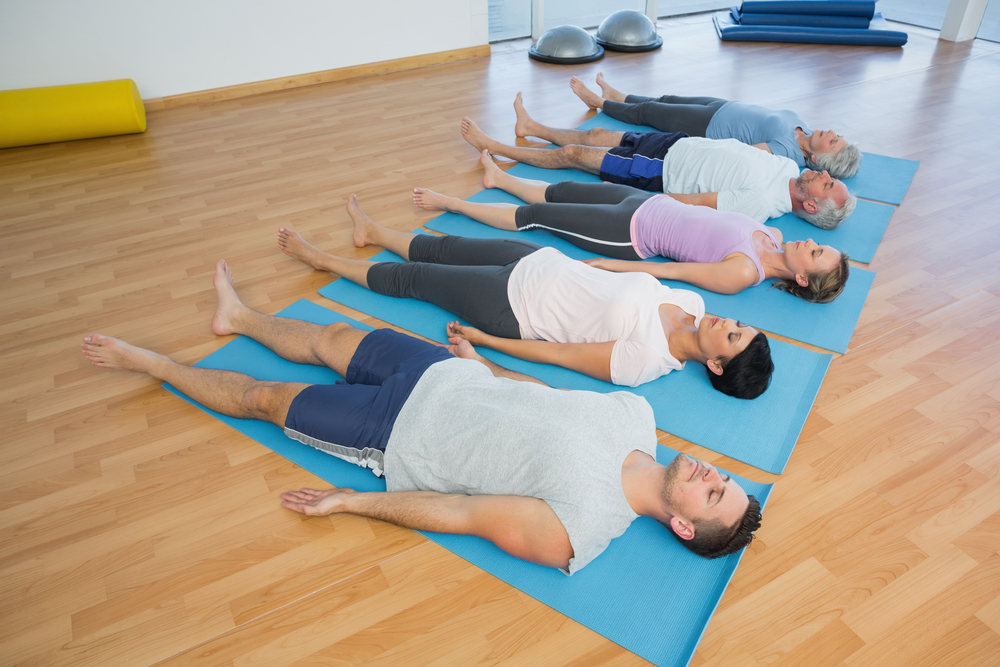
Mindfulness is the very essence of yoga, which basically means teaching yourself to be aware in the moment. Thoughts, movements, and emotions are all looked at from moment-to-moment, with no judgement or plan. It is also a coping mechanism and one that is very effective for diabetes management, as it helps people with diabetes come to terms with their illness and deal with it in a much calmer way. Mindfulness also helps people with diabetes adapt better to stress, depression and anxiety, and – in some cases – can help to eliminate these symptoms.
By avoiding negative thoughts and emotions and replacing them with feelings of contentment and even happiness, things like stress, anxiety, and depression are easier to handle. In terms of diabetes, it helps people to focus on the present and allows them to accept what they are feeling rather than try to change it. Mindfulness is effective in supporting diabetes management and the mental unrest that people with diabetes often face. It has also been clinically proven to improve glycaemic control, weight, and blood pressure for people with type 2 diabetes.
How can Yoga Help Fight Diabetes?
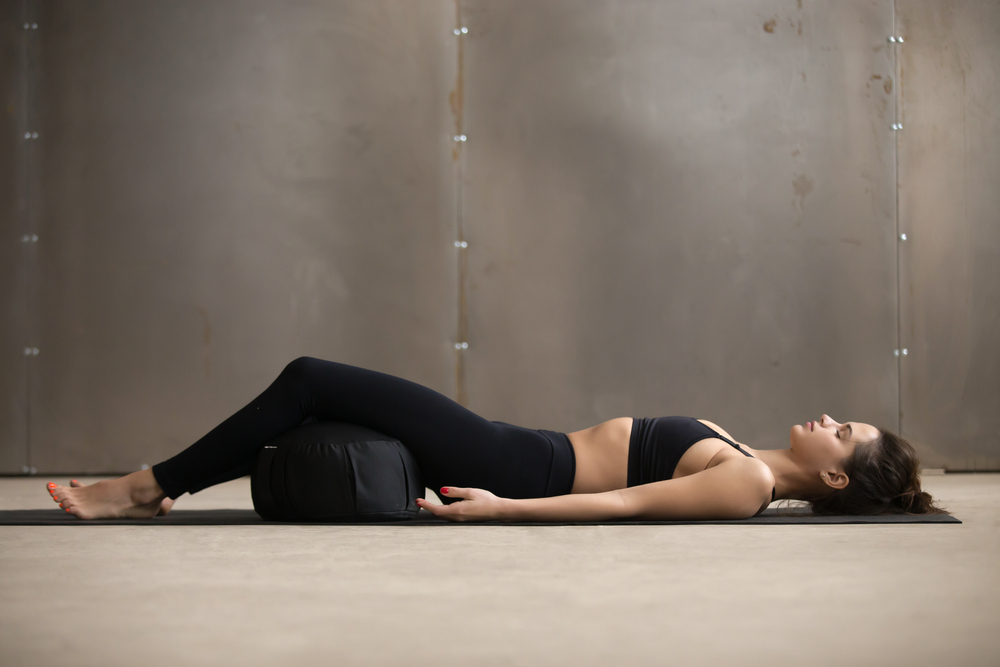
Many studies have now shown that yoga (both asanas and meditation) is a great option for helping to fight diabetes. It can reduce high blood sugar levels and help blood glucose control. In addition, yoga helps to control stress, which also helps to decrease elevated blood sugar levels. Asanas, pranayama (breathing exercises) and meditation is an easy and economical way to help fight diabetes. Not only does it aid in glycaemic control, but it also improves the overall quality of life. Furthermore, yoga helps reduce the risk of cardiovascular diseases, which may then reduce insulin resistance syndrome. Insulin resistance syndrome means that your body is not responding to the insulin that it naturally makes, which causes an increase in blood sugar level. This can then result in type 2 diabetes. The idea is to help regulate stress hormones, as this will help with both blood pressure and blood glucose levels.
Even after doing just one yoga session there will be a reduction in blood glucose levels. In fact, a study that was performed in India by Dr. Venugopal Vijayakumar showed that there were visible changes seen in people with diabetes after just 10 days of yoga practice. His research also showed that yoga helped to reduce stress hormones and inflammation, which reduces insulin resistance. He found that people with diabetes who brought yoga into their everyday lives would find it extremely beneficial.
Pranayama
Pranayama is the practice of controlling the breath, which is the supply of our prana (life force). In Sanskrit, it translates to the extension of the prana (life force), or, breath control. Pranayama originated in India as a yogic discipline to help with concentration. There are various forms of pranayama, each of which works on cleansing, calming or relaxing the body and the mind in different ways.

Pranayama is highly beneficial in treating stress-related disorders as well as controlling glycaemic levels and overall quality of life. This was proven in a study that was performed by the Department of Endocrinology and Metabolism at All India Institute of Medical Sciences in New Delhi, India. Half of the people in the study received standard treatments for diabetes and the other half regularly practiced yogic breathing in addition to the typical treatments. After six months, the group that practiced regular pranayama had a significant improvement in their quality of life.
Yoga Nidra
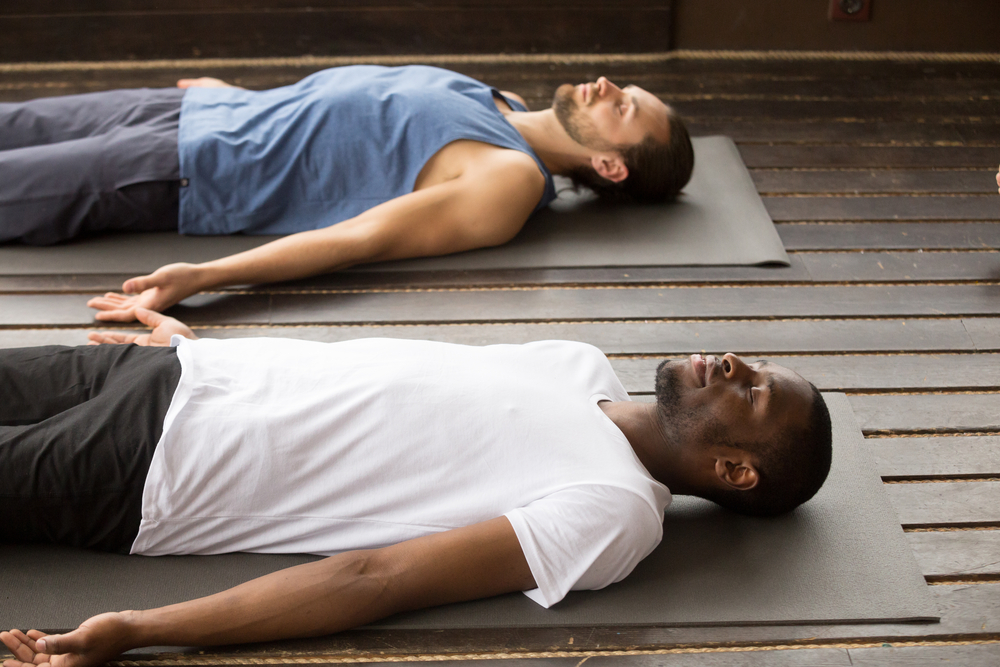
This is a state of consciousness that lies somewhere between being awake and sleeping. Your body is completely relaxed and you become increasingly aware of your inner self. It is different than meditation, as the focus is required, but only a single focus. You are in the state of a light detachment of four of your senses, with only one (hearing) still being connected to listen to instructions. The goal of yoga nidra (yogic sleep) is deep relaxation and a state of meditative consciousness. It is one of the deepest forms of relaxation available while still maintaining full consciousness, and is a great way to help fight diabetes.
The Department of Physiology at S. S. Medical College in Rewa, Madhya Pradesh (India) conducted a study is to evaluate the effect of yoga nidra on blood glucose levels in 41 diabetic patients. All participants were oral hypoglycaemic, with 20 of them also practicing yoga nidra for 30 minutes each day. After 90 days, there was a significant change in mean blood glucose level amongst patients that practiced yoga nidra.
Yoga Asanas
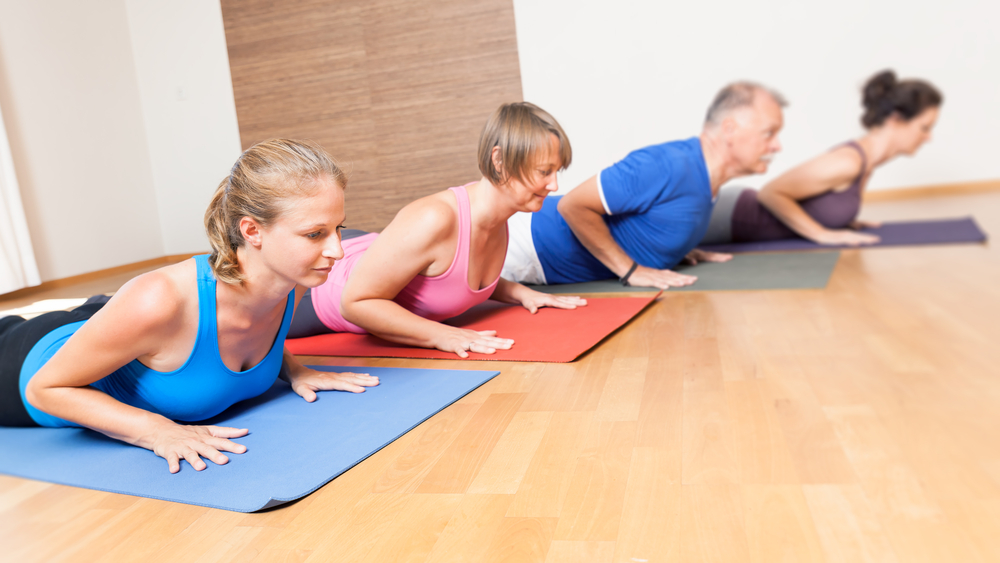
The physical side of yoga will also improve the lives of people with diabetes as well as help fight it. Exercise (along with diet and medication) has been a foundation of diabetes management. Yoga asanas are often mentioned as a great form of exercise for diabetes patients, as it rejuvenates pancreatic cells, promotes weight loss, exercises the muscles and improves mental attitude. Basically, certain yoga postures can promote the production of insulin-producing beta cells, increase glucose uptake in muscular cells, improve weight control and help to create the right mental approach when it comes to dealing with diabetes.
Yoga asanas can help bring balance and health to all aspects of your life; physically, emotionally, mentally and spiritually. As such, it is an attractive alternative to traditional strength training regimes and aerobic exercises. Plus, it can be done right in your home with very little equipment. It is not as strenuous as many other forms of exercise but can burn just as many calories and make you feel great, both inside and out.
In terms of practicing yoga for diabetes, there have been numerous studies to prove that yoga has an enormous impact on glycaemic control, and as a result is beneficial in the management of diabetes. One of these studies (performed at the Department of Physiology at University College of Medical Sciences and Guru Tegh Bahadur Hospital in Delhi) proved that there was a significant decrease in fasting glucose levels after doing 13 specific yoga asanas.
Can Yoga Cure Diabetes?
Yoga works by rejuvenating the main glands that are involved with diabetes, like the stress glands and the pancreas. As mentioned above, certain yoga positions can rejuvenate pancreatic cells, as well as reduce stress. It can also help diabetes patients control their holistic manner by recognizing the effects that things such as stress, a bad diet, and emotional imbalance can have on their well-being and their diabetes. That said, can yoga cure diabetes?
Dr. Phulgenda Sinha, director of the Institute of Yoga in Patna, India and Washington D.C says that “The yogic treatment restores the normal functioning of the pancreas and other glands of the endocrinal system. When these glands begin to function properly, the individual is fully cured of the diabetic disorders and his health is restored to a normal level.” He also adds that initially, the patient should continue to take diabetic medications, but after three weeks of regular practice can gradually reduce it, with the end result being to stop taking it altogether.
He treated patients with diabetes at the Indian Institute of Yoga and found that after around three months they were completely cured. Medicinal treatment for diabetes gives diabetes patients the insulin that their pancreas no longer produces, but never actually cures them of the disease.
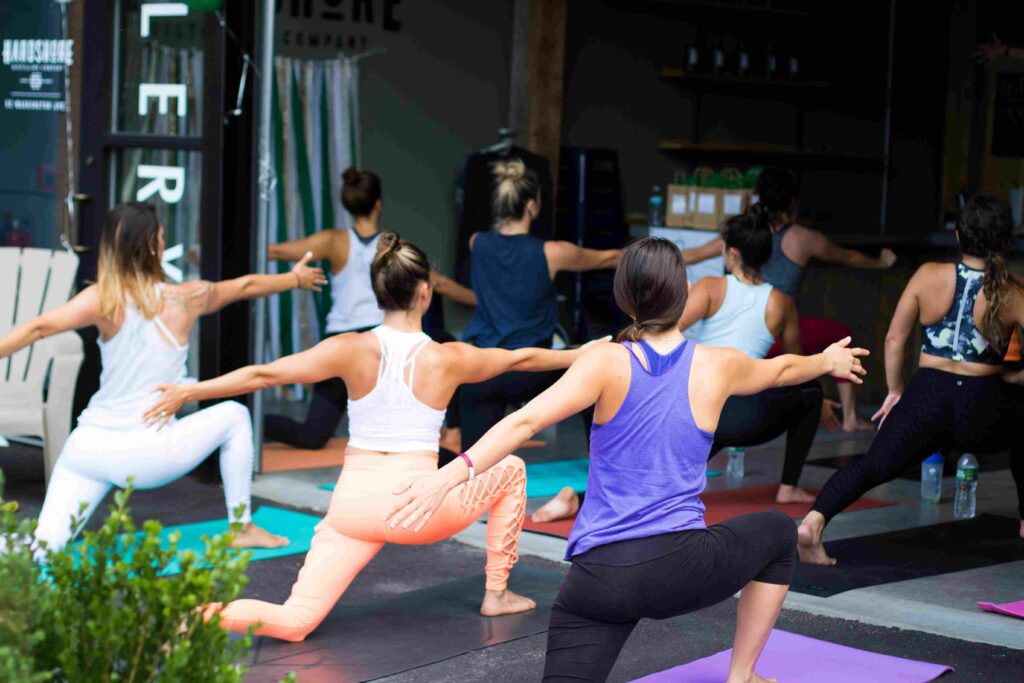
How the Pancreas Works
The pancreas is a gland that is located in the abdomen next to the small intestine. It produces and releases insulin into the bloodstream, helping the body to control how it uses food for energy. It also regulates the body’s glucose level. Insulin moves glucose from the blood into the muscles to be used for energy. It also helps the liver absorb glucose and store it for when it is needed.
Type 1 diabetes occurs when the immune system attacks the beta cells in the pancreas, causing them to no longer produce insulin. Type 2 diabetes starts when the body’s fat, muscle and liver cells are unable to process glucose. The pancreas reacts by producing extra insulin, but eventually can no longer produce enough of it. As a result, the body can no longer naturally control blood glucose levels.
Yoga and the Pancreas
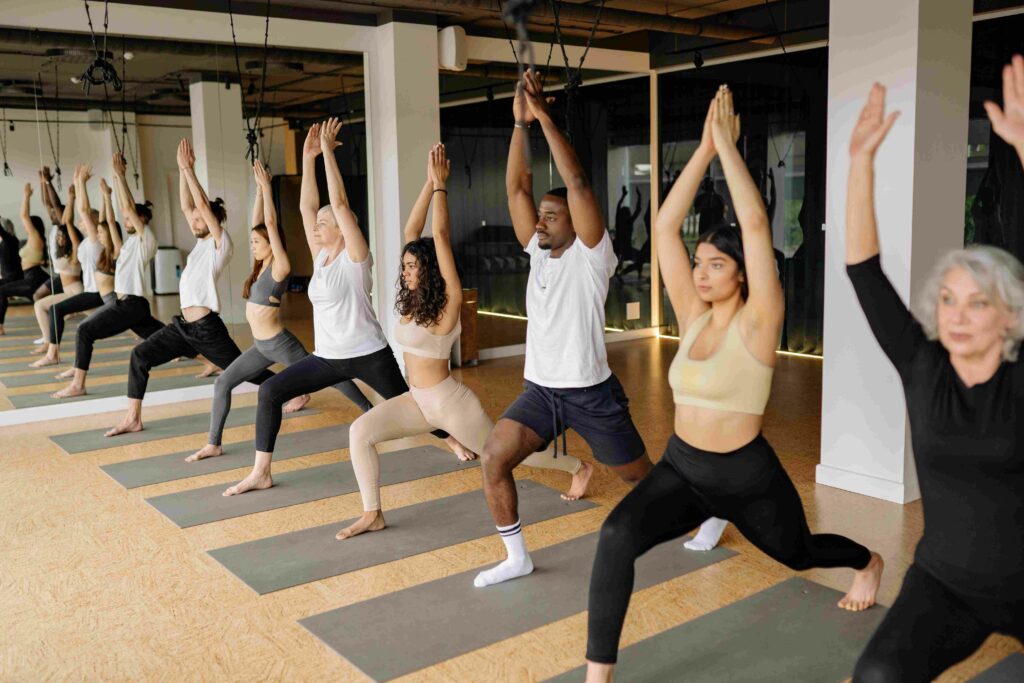
Almost every yoga pose has some sort of therapeutic effect on various organs and glands, including the pancreas. By choosing to do asanas that help revive the normal function of the endocrinal system, you can help restore the normal functioning of the pancreas. In the beginning, it is best to stick with asanas that are easily performed, and progress as your energy levels, flexibility and strength increase. We will get more into details on what yoga poses are best for diabetes later.
What Style of Yoga is Best for Diabetes?
We now know that a regular yoga practice will help reduce blood sugar levels, stimulate the pancreas, and lower blood pressure. Yoga is also proven to be excellent for weight loss. With obesity being a major contributing cause of diabetes, yoga for weight loss will definitely help in diabetes management. But with so many styles of yoga out there today, it is hard to know what style of yoga is best for diabetes.
Hatha Yoga
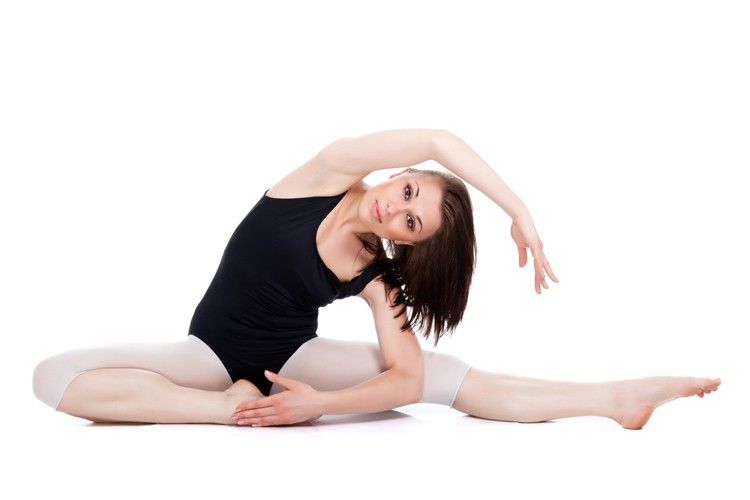
This is a slow-paced style of yoga that gets down to the basics. In fact, most physical yoga that is practiced in the west is based on Hatha Yoga, but with tweaks to make them a style all of their own. Hatha is done by moving into yoga poses, while also controlling the breath. Every movement is accompanied by either an inhale or an exhale, and breathing is done while holding each asana (usually for five breaths). Hatha is fantastic for beginners and for people with diabetes, as it is a gentle practice. Plus, there are hundreds of different poses in Hatha, so you can progress further and add new, more difficult poses as you get more flexible and strong.
Iyengar Yoga
Iyengar Yoga is the practice of precision, with alignment and anatomical details being very important. Yoga positions are help for a long period of time, so less poses are done in a session than in many other styles of yoga. Iyengar is great for people with injuries, as props are used more often than not. It is a yoga that builds strength, stability, elasticity, and awareness. It is a form of Hatha Yoga, combining asanas and pranayama through over 200 poses and 14 breathing techniques. These range from complete beginner to advanced yogis, making it easy to progress through this gentle practice. It is great when doing yoga for diabetes.
Restorative Yoga
Restorative Yoga is based on Iyengar Yoga, but it is much more slow-paced. In fact, it is all about slowing down. You will only do five or six asanas during a restorative practice, but each pose is held for around 10 minutes. This allows you to completely relax and fall into the pose. It includes forward bends, light twists and gentle back bends, all of which are done with lots of props. In fact, no restorative yoga pose is done without the use of a prop, regardless of how flexible you are. The whole point is to be completely relaxed and organically fall deeper into each pose. It is a mellow class that is great for reducing stress, and a great starting point for a complete beginner.
Viniyoga
This is a form of yoga therapy that is based on science and normal movement. Poses are held for extended periods of time and are modified to allow for repetitive movement in and out of each asana. Each movement is connected to breathe, creating inner awareness. Viniyoga makes you aware of the way that your body is moving and functioning, with a lot of focus being put on core stability. It is a slow, meditative practice that is best suited for people who move at a slower pace.
How Yoga Can Help Manage Type 2 Diabetes
It is no secret that moderate exercise is great for people with diabetes, but so is controlling stress. Yoga is both a physical and mindful practice. It helps us to stay centred, mindful and calm, which then aids in keeping blood sugar levels balanced. We also know that certain yoga asanas can help restore the normal operation of the pancreas. As such, it is often recommended to help manage type 2 diabetes.
Type 2 Diabetes
There are more than 371 million people in the world that live with diabetes, 90 percent of which have type 2 diabetes. This form of diabetes happens when the body is no longer able to metabolise glucose. This then leads to high levels of blood glucose, which can be very damaging to the body’s organs. People who have type 2 diabetes are unable to effectively use the insulin that their body has produced. This then causes blood sugar levels to rise and may bring about damage to insulin producing cells in the pancreas. Type 2 diabetes is treated through diet changes, medication, and exercise like yoga.
Yoga for Type 2 Diabetes
Yoga creates mindfulness, which promotes healthy living and living in the moment. This is helpful in making lifelong healthful behaviour changes, like eating right and staying active. Studies have found that having a healthy lifestyle will have positive effects on glucose levels. Plus, it prevents obesity, which is a major factor in people living with type 2 diabetes.
The Department of Epidemiology at the West Virginia University School of Public Health in Morgantown, West Virginia together with the Center for the Study of Complementary and Alternative Therapies at the University of Virginia Health System in Charlottesville, Virginia, did a review of 33 different studies that were run to prove that yoga can help manage type 2 diabetes. In short, it was found that yoga improved blood sugar levels, lowered cholesterol and helped with weight loss. Moreover, it was shown that yoga lowered blood pressure, promoted healthy lung function, enhanced mood and improved the overall quality of life.
Type 2 Diabetes and Stress
In 2016, The American Psychological Association reported that 80 percent of Americans has experienced at least one health problem as a result of stress. As we now know, stress has a particularly negative effect on type 2 diabetes, as the hormone that is released when we experience stress (cortisol) raises blood sugar levels. Stress has also been connected to insulin resistance, which is a trait of type 2 diabetes.
Dr. Gregory Dodell, a certified endocrinologist, says that he has an answer to help his type 2 diabetes patients with stress; yoga. He came to this conclusion after much research himself and found studies to prove this. One such study was performed by Satish et al in 2016 and published in the International Journal of Yoga. The study found that of the 90 people that took part in the 90-day study, 70 percent were less stressed and worried about living with diabetes after doing yoga regularly. They were also more confident in their physical abilities.
More and more doctors are prescribing yoga to their patients as a way to manage stress. This is true whether they have type 2 diabetes or not. But it has been proven again and again that yoga can definitely help manage type 2 diabetes.
How Yoga Can Help Manage Type 1 Diabetes
Exercise is fantastic for people with type 1 diabetes. Especially yoga. Yoga increases the blood supply throughout the body, which improves insulin administration. Plus, in addition to getting your blood flowing and your heart going, yoga can also build lean muscle and reduce stress; two things that are very important if you live with type 1 diabetes.
Type 1 diabetes
Type 1 diabetes is an autoimmune disease that causes loss of insulin production. The insulin producing beta cells in the pancreas are destroyed, which prevents the body from organically producing enough insulin on its own. People who live with type 1 diabetes are required to take insulin on a regular basis to compensate for the loss of naturally produced insulin. Type 1 diabetes is an attack on the immune system that can be caused by a variety of triggers. Eating a healthy diet and being physically active is very important when it comes to maintaining good blood glucose control. Furthermore, these sorts of practices can help lessen the risk of further health complications.
Yoga for Type 1 Diabetes
Yoga is great for the body and the mind, and it also improves the working of endocrine glands and blood circulation – we also know that it helps to manage stress. Due to the fact that people with type 1 diabetes cannot naturally produce the insulin that is needed when they are stressed, blood sugar readings can get high, which is dangerous. Yoga helps to relax the sympathetic nervous system, which helps the endocrine glands. It also teaches you to embrace what you have and to let go of things that are out of your control.
Having type 1 diabetes is stressful enough on its own without additional everyday stress factors. So learning to accept the disease and not let it take over your life (i.e. depression, anxiety, and stress) is important. Yoga also promotes mindfulness, making you more aware of yourself inside and out, as well as your surroundings. In addition, it promotes healthy eating and mindful eating; meaning to control binge and/or emotional eating.
Type 1 diabetes is much harder to control than type 2, but regular exercise (like yoga) improves blood glucose regulation. This can then mean that daily insulin dosages can be reduced. It also decreases the risk of other complications than can occur in people with type 1 diabetes. Yoga will also improve vascular complications, as it reduces dyslipidaemia and helps to control oxidative stress.
People with type 1 diabetes need to be very careful not to do any strenuous exercise or more powerful forms of yoga. Slow-paced yoga is the best form of yoga for people living with type 1 diabetes.
The Best Yoga Poses for Diabetes

There are many styles of yoga and thousands of different yoga poses. When doing yoga for diabetes, it is important to do as many asanas as possible to stimulate the pancreas, as well as others that help you to lose weight, maintain a healthy weight and build muscle. Pranayama is an important part of yoga for diabetes and can be done on its own, or at the end of your yoga practice. These are the six best yoga poses for diabetes.
Ardha Vakrasana
Known as the Half Spinal Twist Pose, Ardha Vakrasana is a gentle twisting pose where the upper body twists, while the lower part of the body is being stretched. One of the main beneficial areas of this asana is on the waist and abdomen, as it stimulates all of the organs and glands in this part of the body, including the pancreas, the adrenal glands, and the sexual organs. It is also great for relieving constipation, backaches and spinal disorders.
Dhanurasana
Dhanurasana (bow pose) is a little bit difficult to perform but is excellent for activating the glands of the endocrinal system. When doing this pose, the pancreas gets fully energised, so it is a natural conditioner for it. Doing dhunurasana can potentially restore the pancreas back to health. This is particularly important for people with type 2 diabetes. As well, it is good for the thyroid, stomach ailments, and weight loss.
Uttanpadasana
Translating into English to raised-leg pose, Uttanpadasana is a pose that is done laying on your back and can be done one leg at a time or raising both at the same time. This asana corrects disorders of the pancreas, like diabetes, as well as working with all of the internal and external abdominal muscles. It can also have a great effect on constipation, indigestion and intestinal disorders. Uttanpadasana activates the entire nervous system and energises the inner cells.
Sarvangasana
Shoulder stand is an excellent pose for controlling and treating diabetes, as it massages the internal organs, which then activates the glandular-system. Sarvangasana also increases blood circulation so that your glands start to work to their full capacity. It is good for metabolism, increasing energy and regulating the thyroid glands. For people with diabetes, this pose will help control blood sugar, metabolise sugar and improve the function of the pancreas.
Kapalbhati
Kapalbhati (fire breath) is a pranayama exercise that helps to cure and control diabetes when practiced regularly. It improves the strength and function of the pancreas and regenerates its beta cells. Another benefit of Kapalbhati is that it helps to lower sugar levels almost immediately.
Bhujangasana
Commonly known by many as cobra pose, Bhujangasana is extremely beneficial for people with diabetes. It tones the reproductive system, stimulates the internal organs and stretches the spine. It is also known to improve blood circulation, relieve constipation and energise the heart.
The Best Yoga Poses for Pre-Diabetes
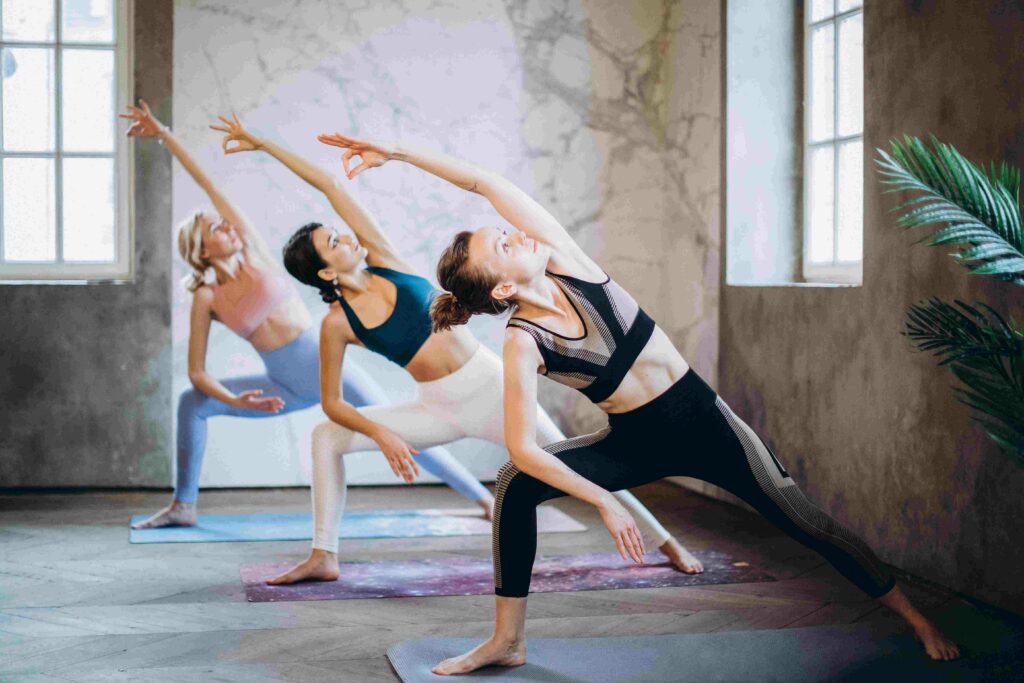
Yoga is a proven way to reduce risk factors for type 2 diabetes by promoting weight loss, reducing blood pressure and improving glucose levels. In fact, the School of Nursing at the University of Pittsburgh in Philadelphia conducted a pilot study on 23 adults, some of whom who practiced yoga twice a week over a period of three months, and others that received general health educational materials. At the start of the study blood tests were done by all participants, and again at the end of the study. The group that did yoga were generally much happier and also experienced improvements in their blood pressure, triglycerides, insulin levels and weight. It proved that yoga is a risk reduction method that can be used for adults at high risk for type 2 diabetes. Here are the 5 best yoga poses for pre-diabetes.
Paschimottanasana
Also known as the seated forward bend, paschimottanasana is a full stretch, and even pulls and stimulates the spinal cord and spinal nerves. It is great in aiding ailments like stomach pain, headaches, piles, back pain and hip pain, and is also known to be positive asana for preventing diabetes.
Utthita Parsvakonasana
Utthita Parsvakonasana (extended side angle pose) is an energising pose that stimulates the abdominal organs and increases stamina. Practicing this pose will teach you how to use your legs to stabilise your body, while at the same time expanding your rib cage to support good breathing. It is also great for controlling blood pressure, which is vital in preventing diabetes.
Parivrtta Parsvakonasana
This is an extension of Utthita Parsvakonasana, which consists of twisting the upper body to the opposite side. Parivrtta Parsvakonasana (Revolved Side Angle Pose) is a deep twist that stimulates the abdominal organs (like the pancreas), improves digestion and increases energy in your body. It also improves balance and circulation.
Trikonasana
Also called triangle pose, Trikonasana stimulates all of your abdominal organs and is particularly good for your kidneys. It aids in digestion, and burns fat around the waist and stomach, making it a great pose for those that are overweight and at risk of getting type 2 diabetes.
Adho Mukha Svanasana
This is one of the most well-known yoga poses out there, and it is included in most yoga sequences. Adho Mukha Svanasana (downward-facing dog) calms the mind, improves digestion and helps lower blood pressure, which is a major factor of type 2 diabetes. It also rejuvenates the body, creating energy, and tones all of the muscles of your body. The results of this asana include weight loss, better breathing, improved digestion and relieving fatigue.
Poses to Avoid When You have Diabetes
Although yoga for diabetes is highly effective and recommended in the medical world, there are some poses that are better to avoid when you have diabetes. It is important not to elevate your blood pressure or blood sugar, which means avoiding all yoga poses that may encourage this. It is also best to avoid doing yoga in a heated room, as this can cause levels to heighten. Here are four yoga poses to avoid when you have diabetes.
Sirsasana
Commonly known as headstand, Sirsasana should be avoided because of the flow of blood to the head that it creates. This is unsafe for people with diabetes, as it can cause a spike in blood sugar and blood pressure.
Chakrasana
Chakrasana (wheel pose) is a deep back bending exercise that also opens up the lungs. It is a vigorous pose that can cause the heart rate to elevate to rapidly, so it should be avoided as an asana for yoga for diabetes. Instead, try Setu Bandha Sarvangasana (bridge pose).
Pincha Mayurasana
This is a higher level yoga pose that requires strength, balance, and flexibility. Pincha Mayurasana (feathered peacock pose) should be avoided if you have diabetes, as it can increase your blood pressure. Plus, the quick rush of blood to the head is not a positive effect on people with diabetes.
Prasarita Padottanasana
Like many of the other asanas to avoid if you have diabetes, Prasarita Padottanasana (wide-legged forward bend) involves hanging upside down, which is not advisable for people with diabetes.
Conclusion
If you are suffering with either type 1 or type 2 diabetes, then you should seriously consider doing yoga as a way to manage it, and possibly even alleviate all symptoms. Yoga for diabetes has been proven to be an essential part of living with diabetes and improving the lives of the people that suffer from this disease. Like anything else, you should always speak to your doctor before starting a regular yoga practice. When you are ready, be sure to find a teacher that is knowledgeable about diabetes and yoga for diabetes. You can also follow YouTube videos that deal specifically with yoga for diabetes. To read more articles about yoga and its beneficial effects, go here.
Our Online Yoga Teacher Training Courses provide a unique opportunity to gain profound knowledge and expertise in the art of yoga. Join us now and unlock the true potential of your practice while discovering the depths of yoga’s ancient wisdom.
Check out our other post:

Responses